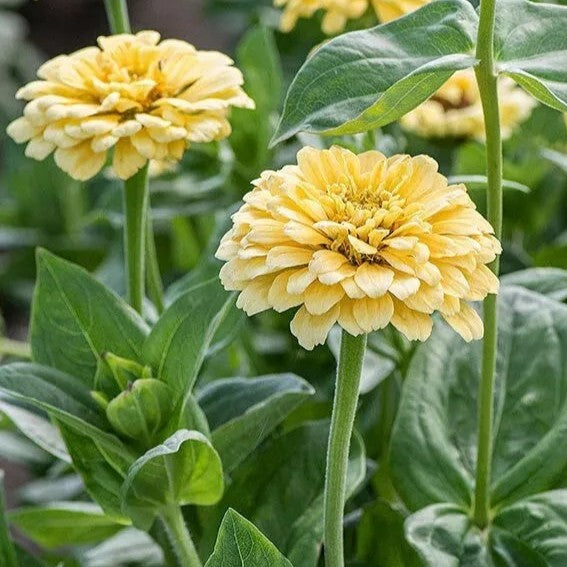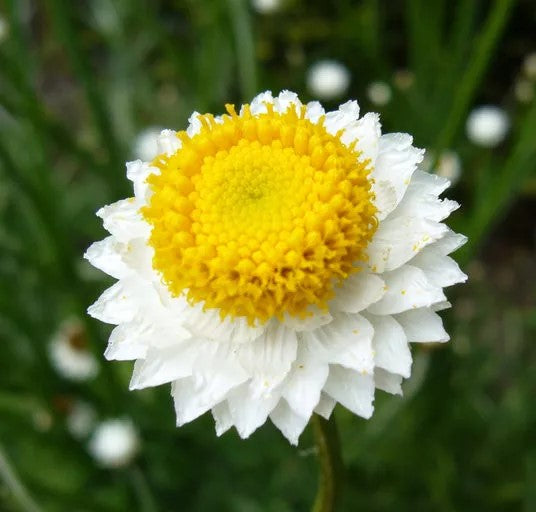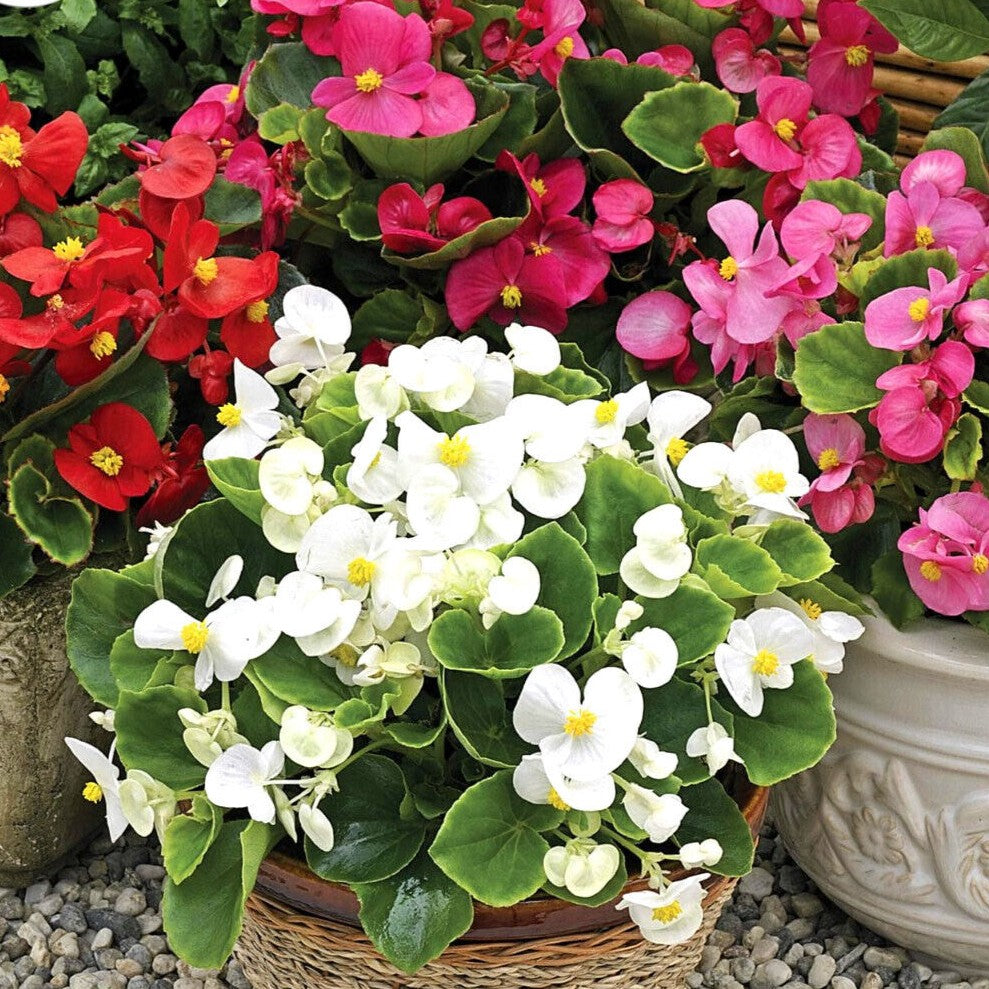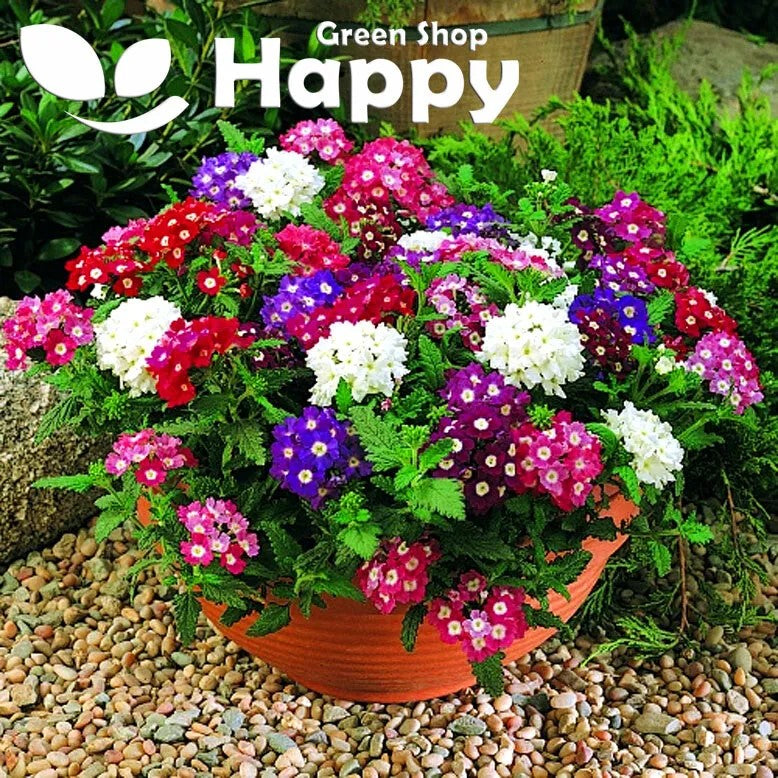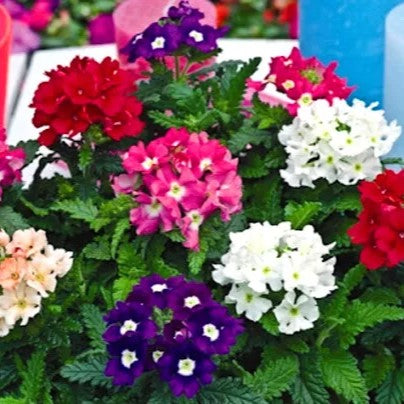Sort by:
180 products
180 products
Discover the uniqueness
Experience the delightful flavor and health benefits of Herbal Blends.
Zinnia 'Chippendale Daisy' – Seeds
(Zinnia haageana)
The Zinnia 'Chippendale Daisy' is a vibrant, long-blooming annual that produces an abundance of cheerful, daisy-like flowers in warm shades of red, orange, and golden yellow, often with contrasting centers. Compact and robust, this variety is excellent for adding bold splashes of colour to borders, flower beds, and containers. Highly attractive to bees and butterflies, it’s a perfect choice for pollinator-friendly gardens.
Key Features
-
Type: Half-hardy annual
-
Height: 40–60 cm
-
Spread: 25–35 cm
-
Flowering: June–October
-
Position: Full sun
-
Soil: Fertile, well-drained
Ideal For
-
Cottage and cutting gardens
-
Pollinator-friendly planting
-
Beds, borders, and pots
-
Summer floral displays
Sowing & Growing
-
Sow indoors: March–April, in trays at 18–22°C
-
Sow outdoors: May, after frost risk has passed
-
Germination: 7–14 days
-
Transplant/Thin: 25–30 cm apart
-
Remove spent flowers to encourage prolonged blooming
Zinnia 'Persian Carpet' Mixed – Seeds
(Zinnia haageana)
Zinnia 'Persian Carpet' is a dazzling mix of small, double and semi-double blooms in rich tapestry shades of gold, burgundy, cream, and mahogany, often with striking bicolor patterns. Compact and floriferous, these zinnias provide months of vibrant color and thrive in sunny spots with minimal care.
Key Features
-
Type: Half-hardy annual
-
Height: 30–45 cm
-
Spread: 25–30 cm
-
Flowering: June–October
-
Position: Full sun
-
Soil: Well-drained, moderately fertile
Ideal For
-
Bedding displays
-
Containers and pots
-
Cutting gardens
-
Pollinator-friendly planting
Sowing & Growing
-
Sow indoors: March–April at 18–22°C
-
Sow outdoors: May–June directly after frost
-
Germination: 7–14 days
-
Thin or transplant to 25–30 cm spacing
-
Deadhead regularly to extend flowering season
Zinnia 'Chippendale Daisy' – Seeds
(Zinnia haageana)
The Zinnia 'Chippendale Daisy' is a vibrant, long-blooming annual that produces an abundance of cheerful, daisy-like flowers in warm shades of red, orange, and golden yellow, often with contrasting centers. Compact and robust, this variety is excellent for adding bold splashes of colour to borders, flower beds, and containers. Highly attractive to bees and butterflies, it’s a perfect choice for pollinator-friendly gardens.
Key Features
-
Type: Half-hardy annual
-
Height: 40–60 cm
-
Spread: 25–35 cm
-
Flowering: June–October
-
Position: Full sun
-
Soil: Fertile, well-drained
Ideal For
-
Cottage and cutting gardens
-
Pollinator-friendly planting
-
Beds, borders, and pots
-
Summer floral displays
Sowing & Growing
-
Sow indoors: March–April, in trays at 18–22°C
-
Sow outdoors: May, after frost risk has passed
-
Germination: 7–14 days
-
Transplant/Thin: 25–30 cm apart
-
Remove spent flowers to encourage prolonged blooming
Winged Everlasting Flower Seeds (Ammobium alatum)
The Winged Everlasting Flower is a charming and unusual annual valued for its tiny, papery white flowers with golden-yellow centers that resemble miniature daisies. Its distinctive winged stems give it an architectural quality, making it a striking garden plant as well as a top choice for dried flower arrangements. Long-flowering and low-maintenance, it’s perfect for cutting gardens, borders, and cottage-style plantings.
What Makes It Special
-
Produces masses of long-lasting papery blooms
-
Unusual winged stems add ornamental interest
-
Excellent for fresh or dried cut flowers
-
Hardy, easy to grow, and tolerant of poor soils
Key Features
-
Botanical name: Ammobium alatum
-
Common name: Winged Everlasting Flower
-
Seed count: Approx. seeds per pack
-
Height/Spread: 50–70 cm tall, 20–30 cm wide
-
Position: Full sun; well-drained soil
-
Flowering period: June–September
Ideal For
-
Cut flower gardens (fresh and dried use)
-
Borders and cottage gardens
-
Low-maintenance summer displays
-
Wildlife-friendly gardens (attracts pollinators)
Sowing Instructions
-
When to sow: March–May indoors or directly outdoors after frost
-
How to sow:
-
Sow thinly in trays or directly in soil
-
Cover seeds lightly with fine soil or vermiculite
-
Germination: 14–21 days at 18–22°C
-
-
Transplanting: Harden off and plant 25–30 cm apart when seedlings are strong enough
-
Care: Deadhead regularly to prolong blooms; cut for drying just before flowers are fully open
Wax Begonia Dwarf Mix – Seeds (Begonia semperflorens)
Wax Begonia Dwarf Mix is a compact, easy-to-grow annual that delivers masses of blooms in shades of red, pink, and white. With glossy green foliage and long-lasting flowers, it thrives in beds, borders, or containers. Heat- and drought-tolerant, it’s the perfect choice for effortless summer color.
Why Grow "Wax Begonia Dwarf Mix"
-
Continuous blooms in vibrant shades
-
Compact, low-maintenance growth
-
Tolerant of heat and dry conditions
-
Perfect for edging and containers
Key Features
-
Type: Half-hardy annual (Begonia semperflorens)
-
Height: 15–25 cm
-
Flowering: June–October
-
Position: Full sun or partial shade
-
Uses: Bedding, edging, patio pots, containers
Ideal For
-
Borders and edging
-
Patio containers and window boxes
-
Low-maintenance summer planting
-
Adding vibrant color to small spaces
Sowing & Growing
-
Sow indoors: January–March (surface sow, do not cover)
-
Germination: 14–21 days at 20–24°C
-
Transplant seedlings to 20 cm spacing
-
Harden off and plant outdoors after frost
-
Pinch tips to encourage bushy growth
Virginian Stock Mix – Seeds
(Cheiranthus maritimus)
Virginian Stock Mix is a charming, fragrant annual that produces clusters of delicate, brightly coloured flowers in shades of pink, white, yellow, and red. Its long-lasting blooms and compact growth habit make it ideal for borders, rockeries, and containers. This easy-to-grow variety attracts pollinators, bringing life and colour to your summer garden.
Key Features
-
Type: Hardy annual
-
Height: 30–50 cm
-
Spread: 20–30 cm
-
Flowering: June–September
-
Position: Full sun to partial shade
-
Soil: Well-drained, fertile soil
Ideal For
-
Borders and edging
-
Rockeries and container planting
-
Pollinator-friendly gardens
-
Summer floral displays
Sowing & Growing
-
Sow indoors: February–April at 15–20°C
-
Sow outdoors: March–May directly in soil
-
Germination: 10–20 days
-
Thin or transplant to 20–30 cm spacing
-
Deadhead to encourage continuous flowering
Verbena Mammoth Mix Seeds (Verbena hybrida)
Verbena Mammoth Mix is a vigorous, long-flowering annual producing large clusters of vibrant blooms in red, pink, purple, and white. Its sprawling, bushy habit makes it perfect for garden borders, containers, and hanging baskets. Loved for its showy flowers and extended blooming season, it brightens any summer garden.
What Makes It Special
-
Large, vibrant flower clusters in red, pink, purple, and white
-
Vigorous, spreading growth ideal for borders, containers, and hanging baskets
-
Long-flowering and low-maintenance
-
Attracts pollinators such as bees and butterflies
Key Features
-
Botanical name: Verbena hybrida
-
Variety: Mammoth Mix
-
Seed count: Approx. seeds per pack
-
Height/Spread: 25–35 cm tall, 40–50 cm spread
-
Position: Full sun; fertile, well-drained soil
-
Flowering period: June–September
Ideal For
-
Borders and garden beds
-
Containers, hanging baskets, and patios
-
Pollinator-friendly gardens
-
Adding vibrant summer color to mixed plantings
Sowing Instructions
-
When to sow: February–April indoors; March–May outdoors
-
How to sow:
-
Sow seeds thinly on the surface of moist seed compost and press lightly; do not cover
-
Germination occurs in 10–14 days at 18–22°C
-
-
Transplanting: Plant seedlings outdoors 25–30 cm apart after frost
-
Care: Water moderately; remove faded flowers to encourage continuous blooming
Verbena ‘Florist Mix’ Seeds (Verbena hybrida)
Verbena ‘Florist Mix’ is a vibrant, long-flowering annual with clusters of small, colorful flowers in shades of red, pink, purple, and white. Its compact, bushy habit makes it ideal for borders, containers, and hanging baskets. Perfect for adding bright color to summer gardens and attracting pollinators.
What Makes It Special
-
Clusters of bright, colorful blooms in red, pink, purple, and white
-
Compact, bushy growth suitable for containers, borders, and hanging baskets
-
Long-flowering and low-maintenance
-
Attracts pollinators like bees and butterflies
Key Features
-
Botanical name: Verbena hybrida
-
Variety: Florist Mix
-
Seed count: Approx. seeds per pack
-
Height/Spread: 20–30 cm tall, 25–35 cm spread
-
Position: Full sun; fertile, well-drained soil
-
Flowering period: June–September
Ideal For
-
Borders, beds, and edging
-
Containers and hanging baskets
-
Pollinator-friendly gardens
-
Patio displays and bright summer color
Sowing Instructions
-
When to sow: February–April indoors; March–May outdoors
-
How to sow:
-
Sow seeds thinly on the surface of moist seed compost and press lightly; do not cover
-
Germination occurs in 10–14 days at 18–22°C
-
-
Transplanting: Plant seedlings outdoors 25–30 cm apart after frost
-
Care: Water moderately; remove faded flowers to encourage continuous blooming
Tall Snapdragon Mixed Seeds (Antirrhinum majus ‘Maximus’)
Tall Snapdragon Mixed is a classic garden favorite featuring spikes of vibrant, tubular flowers in a mix of colors. Its tall, upright growth makes it perfect for borders, beds, and cut flower arrangements. Loved for its long flowering season and striking vertical display, it brings charm and elegance to any garden.
What Makes It Special
-
Vibrant tubular flowers in assorted colors
-
Tall, upright growth ideal for dramatic borders and cut flowers
-
Long-flowering and easy to grow
-
Attracts pollinators such as bees and butterflies
Key Features
-
Botanical name: Antirrhinum majus ‘Maximus’
-
Variety: Mixed
-
Seed count: Approx. seeds per pack
-
Height/Spread: 60–90 cm tall, 20–30 cm spread
-
Position: Full sun; well-drained, fertile soil
-
Flowering period: June–September
Ideal For
-
Back borders and garden beds
-
Cut flower arrangements
-
Pollinator-friendly gardens
-
Adding vertical color and structure to summer gardens
Sowing Instructions
-
When to sow: February–April indoors; March–May outdoors
-
How to sow:
-
Sow seeds thinly on the surface of moist seed compost and press lightly
-
Germination occurs in 10–14 days at 18–20°C
-
-
Transplanting: Plant seedlings outdoors 20–25 cm apart after frost
-
Care: Water moderately; remove faded flowers to encourage continuous blooming
Showing 9/180




